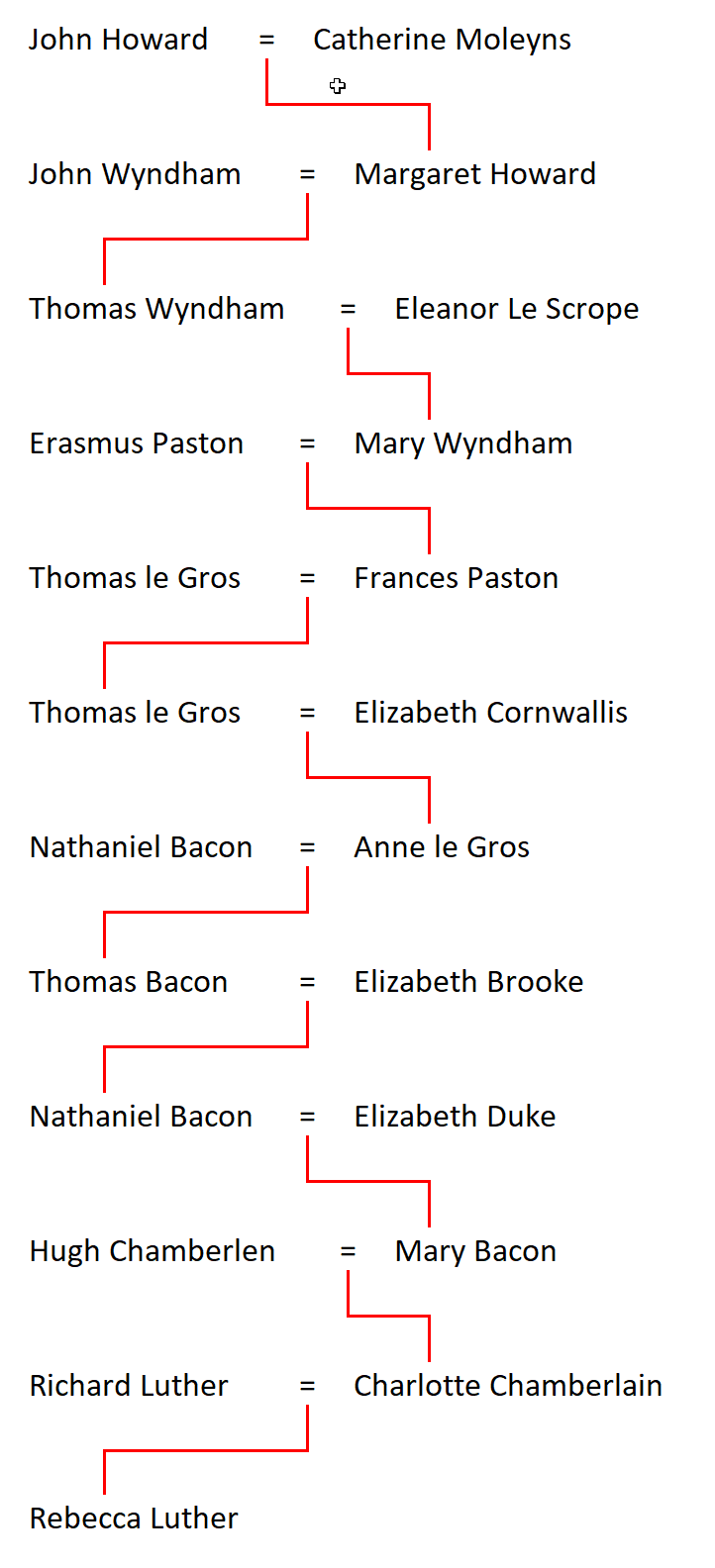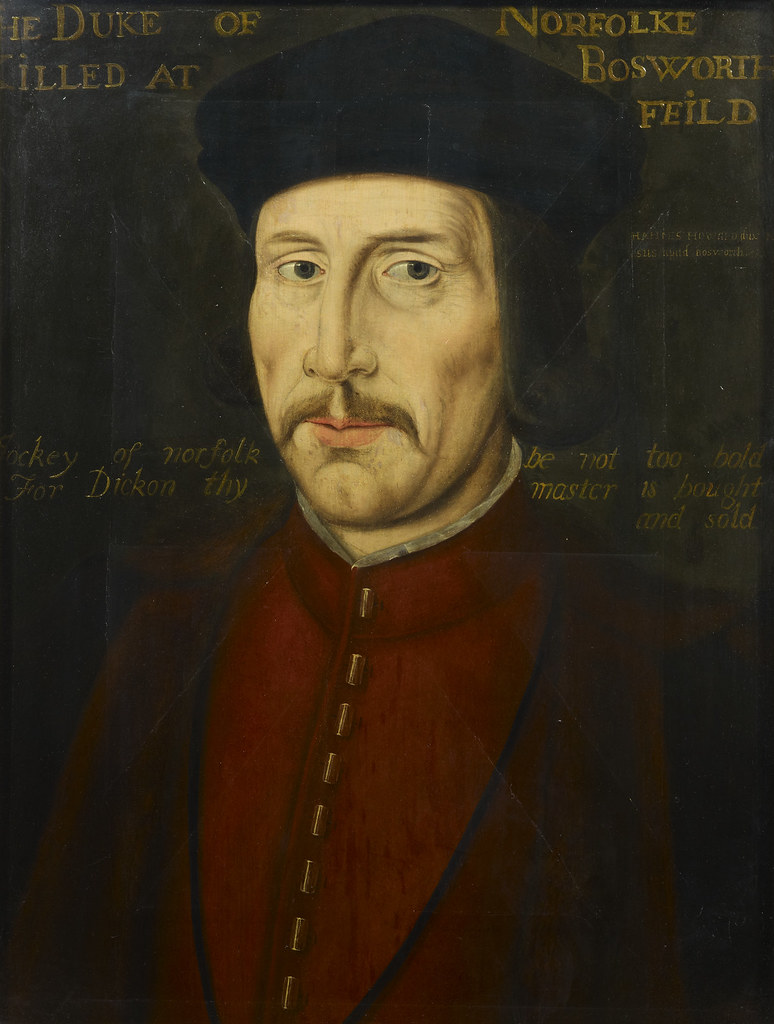John Howard, 1st Duke of Norfolk
16th Great Grandfather – FFFMFFMMMFFMFMMFMF1

John Howard was an English nobleman, soldier, politician and the first Howard Duke of Norfolk2. He was born about 1425, the son of Sir Robert Howard of Tendring Hall, Suffolk, by his wife Margaret eldest daughter of Sir Thomas de Mowbray the 1st Duke of Norfolk (of the first creation)3,4. His father Sir Robert Howard was probably a retainer of Sir John de Mowbray the 2nd Duke of Norfolk, which would have explained why he had married the Duke’s sister.
During his youth, like his father before him John was in the household of his cousin John de Mowbray, the 2nd Duke of Norfolk and became embroiled into the conflict between the Dukes of Norfolk and Suffolk.
Due to his connections with the Dukes of Norfolk John held a number of local offices. He was elected to Parliament for the first time as a member for Suffolk in 14495, and later in 1455 he represented Norfolk. He was a Justice of the Peace for both the counties of Norfolk (from 1452-1454) and Suffolk (from 1455-1459).
Sometime before 29th September 1442 he married Catherine Moleyns daughter of Sir William Moleyns. They had two sons and four daughters. One of their daughters, Margaret married Sir John Wyndham of Felbrigg the father of Sir Thomas Wyndham.
John was a staunch adherant to the House of York during the Wars of the Roses and was knighted by Edward IV at the Battle of Towton6 on 29th March 1461. In 1468 he was appointed Treasurer of the Royal Household, a position he held for 2 years, until Edward lost the throne in 1470.

His wife Catherine died on the 3rd November 1465 and sometime later John remarried to Margaret Chedworth, by whom he had one daughter.
On 24th April 1472, John was appointed to the Order of the Knights of the Garter7. When Edward IV died in 1483, he carried the royal banner at his funeral.
He was loyal the Edward’s brother Richard and he escorted prince Rihcrad the younger son of Edward IV to join his older brother in the Tower. Richard appointed John Lord High Steward and John bore the crown before Richard at his coronation, his eldest son Thomas carrying the Sword of State.
On 28th June 1483 he was created Duke of Norfolk of the third creation, the title having become vacant on the death of John de Mowbray, 4th Duke of Norfolk and John’s second cousin, once removed.
John died at the Battle of Bosworth Field on 22nd August 1485, where he was commanding the vanguard for King Richard III.
References
“Battle of Towton.” 2025. Wikipedia; Wikimedia Foundation. 2025. https://en.wikipedia.org/w/index.php?title=Battle_of_Towton&oldid=1300640538.
“Duke of Norfolk.” 2025. Wikipedia; Wikimedia Foundation. 2025. https://en.wikipedia.org/w/index.php?title=Duke_of_Norfolk&oldid=1287983253.
“John Howard, 1st Duke of Norfolk.” 2025. Wikipedia; Wikimedia Foundation. 2025. https://en.wikipedia.org/w/index.php?title=John_Howard,_1st_Duke_of_Norfolk&oldid=1281866704.
“List of the Knights of the Garter.” 2025. 2025. https://www.heraldica.org/topics/orders/garterlist.htm.
“Thomas Mowbray, 1st Duke of Norfolk.” 2025. Wikipedia; Wikimedia Foundation. 2025. https://en.wikipedia.org/w/index.php?title=Thomas_Mowbray,_1st_Duke_of_Norfolk&oldid=1287284625.
Wedgwood, Josiah C. 1936. History of Parliament, Biographies of the the Members of the Commons House, 1439-1509. London: His Majesty’s Stationery Office. hhttps://archive.org/details/in.ernet.dli.2015.210096/page/n5/mode/1up.
Footnotes
-
When showing relationships F means Father, M means Mother, U means Uncle and A means Aunt. So FFM is my father’s father’s mother, and FFMU is my father’s father’s mother’s uncle.↩
-
see (“Duke of Norfolk” 2025)↩
-
see (Wedgwood 1936), pp. 473-474↩
-
see (“Battle of Towton” 2025)↩
-
see (“List of the Knights of the Garter” 2025), No. 207.↩